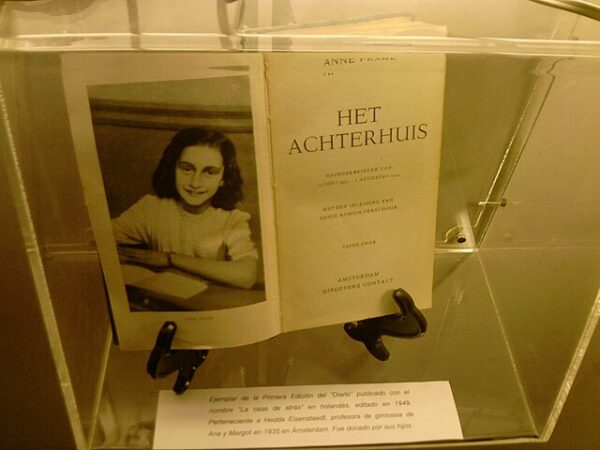On June 25, 1947, The Diary of a Young Girl—commonly known as The Diary of Anne Frank—was first published, forever embedding itself into the collective conscience as one of the most poignant accounts of human suffering and resilience during World War II. Anne Frank, a Jewish teenager, had chronicled her experiences, reflections, and dreams over two years spent hidden from Nazi persecution in a secret annex in Amsterdam. Her words, never intended for public consumption, provided an extraordinary testament of hope amid despair, courage amid fear, and humanity amid cruelty.
Born on June 12, 1929, in Frankfurt, Germany, Anne Frank moved with her family to Amsterdam in 1933 to escape rising antisemitism under Hitler’s regime. By 1942, the Nazis had occupied the Netherlands, and the Franks, along with the Van Pels family and dentist Fritz Pfeffer, concealed themselves in a secret annex behind the offices of Otto Frank, Anne’s father. From July 1942 until their tragic discovery in August 1944, Anne meticulously documented their daily life—an existence defined by anxiety, boredom, cramped quarters, and occasional sparks of joy.
Anne’s diary was more than a record of events; it was an introspective meditation on adolescence under unimaginable conditions. She captured not only the ordinary tensions and dreams typical of youth but also her deepening philosophical inquiries into morality, faith, and human nature. “I still believe, in spite of everything, that people are truly good at heart,” Anne wrote—words that have come to symbolize the diary’s enduring message of optimism.
Upon the annex’s discovery in August 1944, Anne and her companions were arrested and deported. Anne was eventually sent to the Bergen-Belsen concentration camp, where she died of typhus in early 1945, mere weeks before liberation. Of the eight people hidden in the annex, only Otto Frank survived the Holocaust.
Otto returned to Amsterdam, grieving profoundly yet driven by a profound sense of duty to honor his daughter’s memory. In the empty annex, Miep Gies, one of their loyal protectors, handed Otto Anne’s preserved writings. Though heartbroken and hesitant, Otto recognized the universal importance of Anne’s story. After careful editing, he arranged the publication of the diary.
Published initially in Dutch as Het Achterhuis (“The Annex”), the diary rapidly became an influential work worldwide. Readers found Anne’s words achingly personal yet profoundly universal—a young girl’s voice resonating far beyond its time and place, offering clarity and compassion against the darkest backdrop imaginable. The diary was translated into English in 1952 as The Diary of a Young Girl and quickly became an international bestseller.
Over 30 million copies have been sold.
Critically acclaimed, Anne’s diary was hailed not merely as a historical document but as a literary achievement. Its raw honesty, vivid portrayals, and Anne’s remarkable introspection elevated the work into the canon of world literature. Soon adapted into stage plays, movies, and educational curricula, it served as a powerful vehicle for Holocaust education and a moral clarion call against prejudice and hatred.
Beyond its literary acclaim, the diary profoundly shaped collective memory, personalizing the unfathomable tragedy of the Holocaust. It provided generations of readers—especially young readers—with their first tangible encounter with the horrific consequences of intolerance and racism. Anne’s hopeful yet heartbreaking voice humanized the abstract statistics of genocide, compelling individuals and societies to confront the horrors of antisemitism and the imperative of remembrance.
Today, Anne Frank’s diary continues to inspire and educate, reminding the world of its capacity for both profound cruelty and extraordinary compassion. Its publication in 1947 was not merely the unveiling of one young girl’s extraordinary story, but a pivotal moment in historical consciousness—cementing Anne Frank as a universal symbol of the human spirit’s resilience, dignity, and enduring hope in the face of overwhelming darkness.






